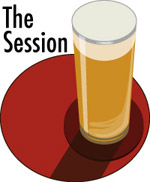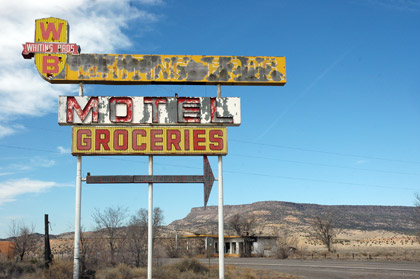 In setting the theme for The Session #14: Beer People Jeff Bell asked for “pen portraits.”
In setting the theme for The Session #14: Beer People Jeff Bell asked for “pen portraits.”
At the risk of appearing lazy I’m letting the subject speak for himself. Ed Reisch was the fourth generation of his Springfield, Ill., family to oversee operations for Reisch Brewing Co. The brewery operated from 1849 until 1966, although Reisch left in 1964 to work for Pabst in Milwaukee
I visited him in December to collect his oral history, in this case using video. Here are a couple of minutes in which he talks about brewing Pabst and Andecker (Pabst’s high-end beer) in the 1970s.
The Reisch Brewery is gone . . . It was not insignificant — by the early twentieth century it occupied three acres and 11 building, shortly before Prohibition producing nearly 80,000 barrels annually. Ed Reisch was born in 1919, and played in the brewery as a youth during Prohibition, when malt syrup was produced there.
But the Reisch story continues . . . One of Ed’s sons, George, is a corporate brewmaster at Anheuser-Busch and George’s son, Patrick, is training to become a professional brewer. That will make six generations.
So more later.
 Red Tractor beer is not a brand in the UK (as opposed to the Palisade Red Truck IPA from Colorado), but a stamp that assures it is made only with British ingredients that have been checked for quality assurance.
Red Tractor beer is not a brand in the UK (as opposed to the Palisade Red Truck IPA from Colorado), but a stamp that assures it is made only with British ingredients that have been checked for quality assurance.
 The photo on the left was taken at our destination last week — Zion National Park in Utah — and the photo at the top on the way there. Whiting Brothers businesses, motels and services stations, operated along Route 66 from 1926 into the 1990s (though their presence was severely diminished before the end).
The photo on the left was taken at our destination last week — Zion National Park in Utah — and the photo at the top on the way there. Whiting Brothers businesses, motels and services stations, operated along Route 66 from 1926 into the 1990s (though their presence was severely diminished before the end).